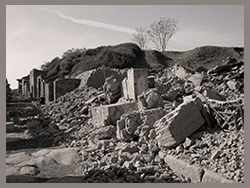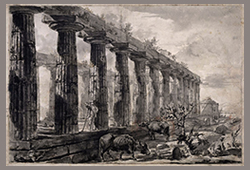scarica l’articolo in formato pdf: Archeologia e rischio sismico Continue Reading
Recentemente alcune circolari ministeriali hanno esteso l’applicazione delle vigenti normative relative al rischio sismico ai beni archeologici. Questa indicazione si manifesta abbastanza impropria perché le linee guida redatte dal MIBAC sono strutturate per l’edilizia monumentale e non per quella allo stato di rudere che non solo è soggetta ad una ben diversa fruizione, ma che ha anche peculiari esigenze di conservazione. La nota, nell’evidenziare le particolarità del costruito archeologico, suggerisce un diverso atteggiamento culturale che, pur nel rispetto della sicurezza dei visitatori, eviti interventi poco rispettosi della storia materiale del costruito antico, compromettendone il valore di monumento-documento.
.
Some Italian MIBAC (Italian Minister for cultural heritage) memoranda apply to the archaeological sites the same seismic rules used for buildings. That appears incorrect because the state of ruin is subject to a quite different use, but also has the peculiar needs of conservation. Starting from the idea that the “archaeological built heritage” has an artistic or monumental standing and it may also represent a simple attestation of aspects of human activity in the past, this paper suggests a different cultural attitude aimed to simultaneously respect the safety of visitors and avoid actions disrespectful of the material history of the ancient built.


